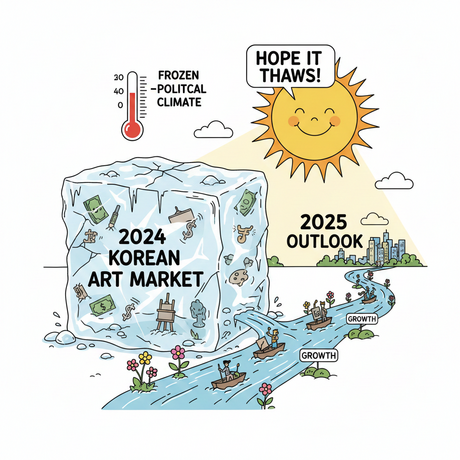A stunning temporary bamboo installation called "What We Leave Behind" has been unveiled in front of the Museum of Contemporary Art in Sydney, creating a dramatic curved tunnel that invites visitors to walk through and experience art in a completely new way. The impressive structure, designed by Cave Urban for the 2025 Sydney Festival, represents one of the most ambitious community-built art installations in recent memory.
The installation directly responds to the festival's powerful theme of "Birth, Destiny and What We Leave Behind," exploring how art can tell stories through the careful assembly of materials, public participation, and designs that work specifically with their location. What makes this project truly extraordinary is both its scale and the incredible amount of community involvement that went into creating it.
The numbers behind the installation are staggering. Cave Urban started with 500 bamboo poles, all sourced locally from the Sydney area. These poles were then painstakingly hand-split into more than 2,500 individual strands, a labor-intensive process that required both skill and patience. Over the course of ten intensive days, these thousands of bamboo strands were carefully woven together to form the tunnel's curved, shell-like structure.
The finished installation is truly impressive in its dimensions. The bamboo tunnel stretches 40 meters in length - roughly the length of four basketball courts placed end to end - and rises to over seven meters at its highest point, making it tall enough for a two-story building to fit underneath. The structure forms a graceful curved shell that completely changes the experience of the space in front of the Museum of Contemporary Art.
What sets this installation apart from other public art projects is the deep level of community involvement that was built into every aspect of its creation. Rather than simply being designed and built by professionals, "What We Leave Behind" was developed through genuine collaboration with members of the Sydney community. People were invited to contribute handwritten messages directly onto special 8-meter-long bamboo strips, creating a personal connection between the community and the artwork.
The response from the public was overwhelming. In total, community members contributed an incredible 25,000 handwritten messages, each one becoming part of the structure itself. These inscriptions weren't just decorative elements added to the surface - they were actually integrated into the bamboo weaving, meaning that each message became both a structural component and a narrative element of the final artwork. This approach means that the stories, hopes, and thoughts of thousands of Sydney residents are literally woven into the fabric of the installation.
The design of the tunnel itself is carefully calculated to create a specific experience for people walking through it. Rather than maintaining the same width and height throughout, the tunnel gradually widens and rises as visitors move from one end to the other. The curvature was specifically designed to prevent people from seeing straight through from one end to the other, which encourages visitors to experience the structure as a series of changing spaces rather than simply a passageway.
The positioning of the installation also creates meaningful connections with Sydney's most famous landmarks. The tunnel's entrance was carefully positioned to frame a perfect view of the Sydney Opera House, one of the world's most recognizable architectural achievements. At the same time, the installation's graceful arching form deliberately echoes the iconic curve of the Sydney Harbour Bridge, creating both visual and conceptual dialogue with the surrounding urban environment.
The choice of bamboo as the primary building material was far from random. Cave Urban selected bamboo for several practical and aesthetic reasons that made it perfect for this project. Bamboo offers excellent tensile strength, meaning it can handle significant stress without breaking, while also providing the flexibility needed to create the installation's complex curved forms. The material is also relatively easy to process by hand, which was essential given the community-involvement aspect of the project.
Despite being made entirely from woven bamboo strands, the finished structure is remarkably stable and durable. The complete shell is approximately 5 centimeters thick, creating a lightweight yet sturdy construction that can safely accommodate the thousands of visitors expected to walk through it during the festival period.
The aesthetic qualities of bamboo also contribute significantly to how the installation interacts with its surroundings. The natural golden tone of the bamboo creates a beautiful visual connection with the warm sandstone facade of the Museum of Contemporary Art building directly behind it. At the same time, the organic, woven construction of the bamboo tunnel creates a striking contrast with the geometric precision and rigid lines of the museum's modern architecture.
The construction process itself became an integral part of the artwork's meaning and impact. Rather than following traditional construction methods where skilled professionals do all the work, Cave Urban developed a responsive building approach that allowed for direct community participation at every level. The team combined the expertise of skilled craftspeople with the enthusiasm and energy of untrained volunteers, creating a construction process that was as collaborative as it was complex.
The area in front of the Museum of Contemporary Art was transformed into what essentially became a collective fabrication space, where multiple activities happened simultaneously. While some community members worked on preparing bamboo materials - splitting poles and preparing strands for weaving - others were actively involved in the weaving process itself. This parallel approach meant that the public involvement wasn't just symbolic but formed an essential part of how the structure actually got built.
This community involvement wasn't just a nice addition to the project - it became fundamental to both the spatial design and the conceptual meaning of the final installation. The fact that thousands of people directly contributed their time, energy, and personal messages means that "What We Leave Behind" truly represents the collective voice and creative spirit of Sydney's diverse community.
The installation is designed with impermanence in mind, acknowledging that temporary public art can have just as much impact as permanent installations. This temporary nature actually adds to the project's meaning, as it reflects the festival's themes about what we leave behind and how our actions and creations continue to influence the world even after we're no longer directly involved.
The formal design language of the installation, combined with its unique assembly process, reflects broader themes that resonate far beyond the art world. The project explores concepts of interconnection - how individual contributions combine to create something larger than the sum of its parts. It examines accumulation - how small actions and messages can build up over time to create significant impact. And it demonstrates collective authorship - showing how communities can come together to create meaningful cultural expressions.
Set within Sydney's contemporary urban context, "What We Leave Behind" offers visitors a unique opportunity to experience art that is simultaneously ancient in its materials and techniques, and thoroughly modern in its community-engagement approach and conceptual framework. The installation stands as a powerful example of how public art can bring people together, create meaningful dialogue with existing architecture and landmarks, and provide spaces for both individual reflection and collective experience.








